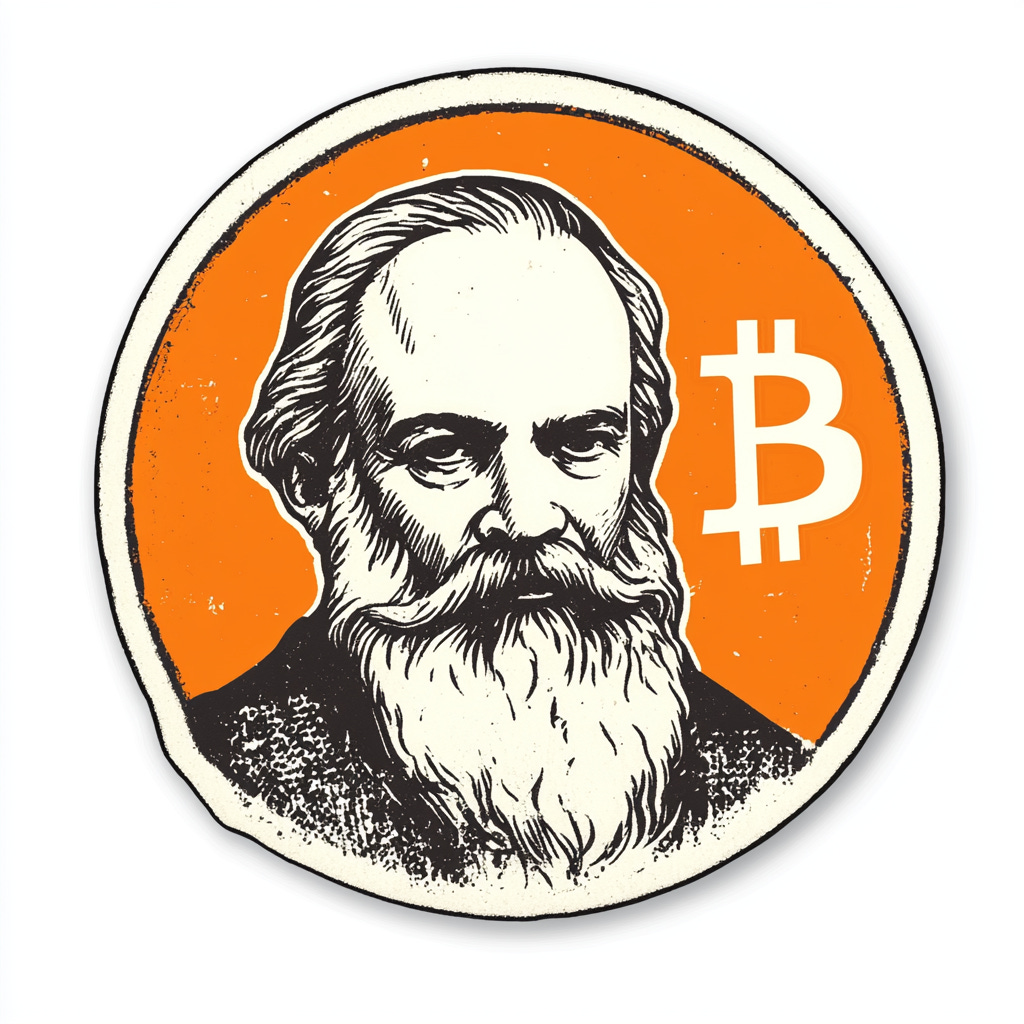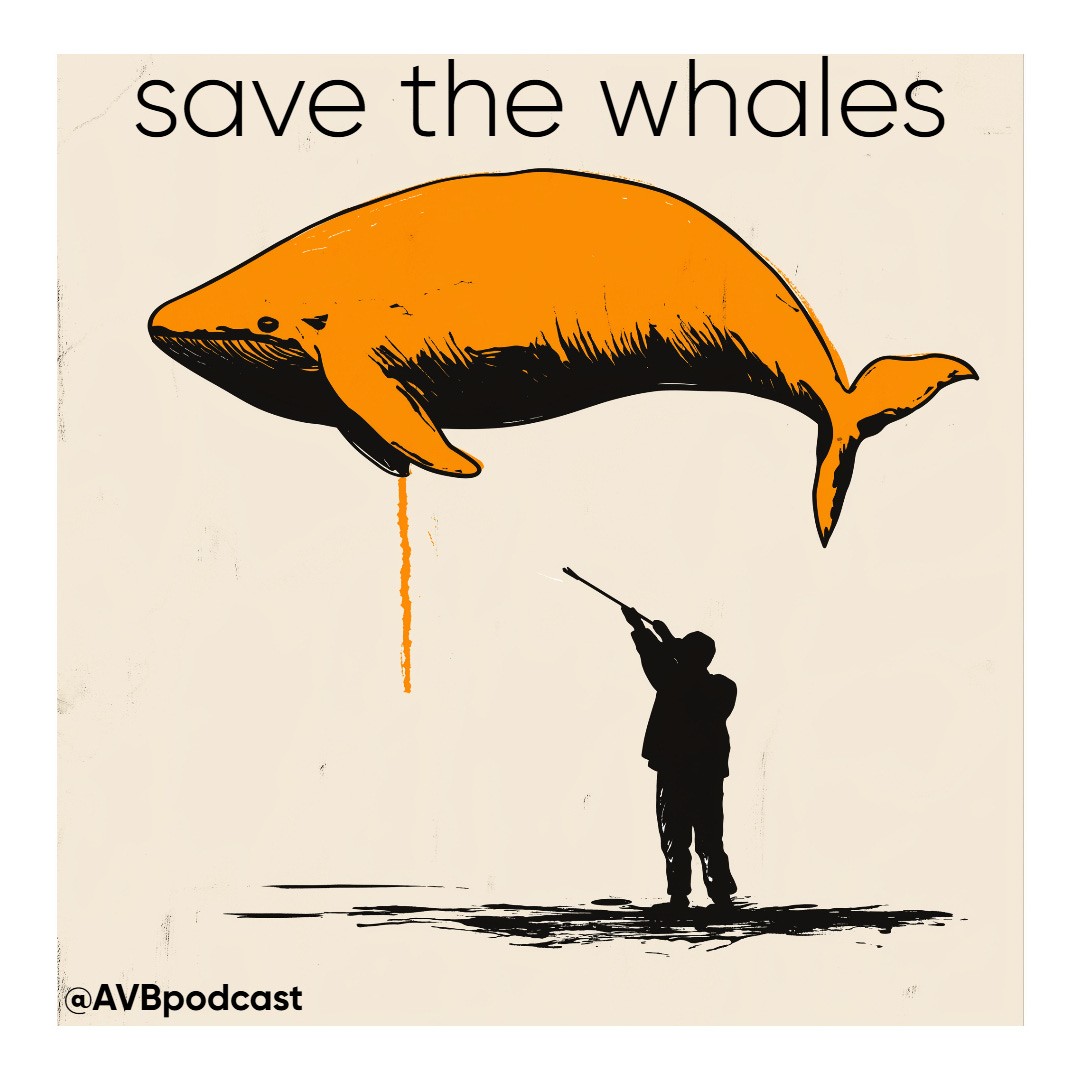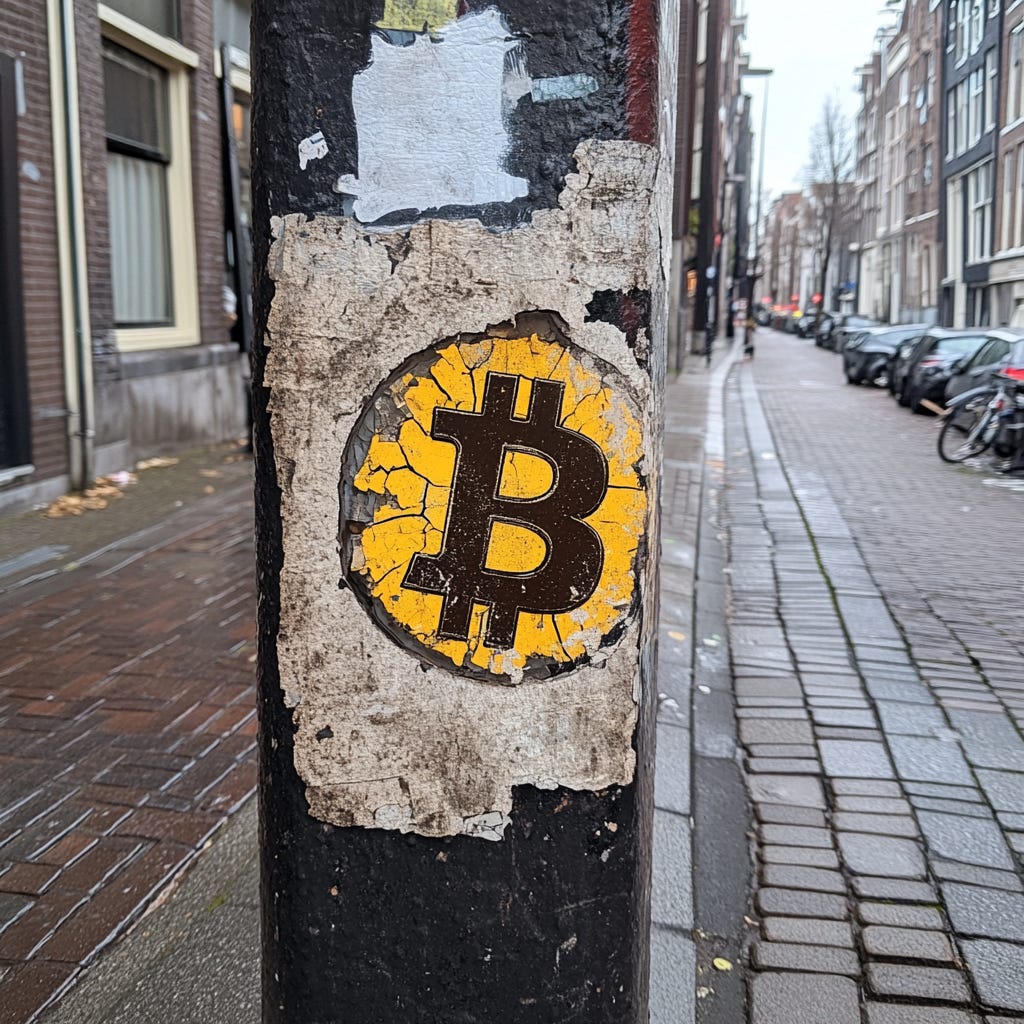-
 @ AVB
2025-03-18 23:46:54
@ AVB
2025-03-18 23:46:54glue for the mind
\ You’ve seen them, these garish orange Bitcoin stickers slapped on lampposts, laptops, windows and the occasional rust-bucket Honda. They’re sometimes in some areas a sort of graffiti plague on the landscape, certainly when a meetup or bitcoin conference was held in the area (especially then the city or town can fork out some extra budget to clean things up and scrape the stickers from statues of famous folk heroes or the door to the headquarters of a local bank branche).\ \ At first glance, it might seem like enthusiasm Bitcoiners desperate to scream their obsession from the rooftops. Both for the fun of it, and to get rid of the pack of stickers they’ve got at a local meetup.\ \ But let’s cut to the chase: covering half a town in stickers isn’t clever. It’s lazy, counterproductive, and has nothing to do with what Bitcoin actually stands for.\ Worse, it reeks of the brain-dead low grade (cheap) marketing tactics you’d expect from shitcoiners or the follow up of some half-baked flyer campaign by a local communist clique.\ Proof? Bitcoin stickers are literally covering up — or being covered up themselves, usually by - communist stickers in a pointless competition for use of real-world ad space.\ \ Maybe, bitcoiners should just create a sticker where Karl Marx ànd the bitcoin logo appear in the same sticker, so both groups can enjoy it’s uselessness, and call it quits to get this stupidity over with once and for all.\ A sticker with a shiny B might look cool at first. But what does it actually do?
 Communist and Bitcoin logo sticker
Communist and Bitcoin logo stickerSpamming stickers doesn’t make “frens”
There’s a psychology behind these stickers of course: people slap them up to feel part of a rebel tribe, flipping off central banks or feeling part of the crew.\ This crude, omnipresent approach to marketing echoes the late 1960s— an era of peak fiat, not Bitcoin’s time.\ Mimicking those tactics today, as if Bitcoin were some hip underground record store trying to spread its brand name, is utterly irrelevant.\ Sure, people love signaling affiliations with an easy and cheap identity flex — like a bumper sticker yelling: “Look at me I’m special!”\ \ But plaster a town with Bitcoin logos, and it stops being edgy and it was never funny; it becomes an eyesore and puts bitcoiners in the same category as the social justice warriors and political youth movements or brands of local energy drinks doing some weird campaign.\ \ Advertising psychology shows overexposure breeds resentment, not interest. Flood a street with stickers, and you’re not lighting a spark. You’re making people uninterested, gag, associating Bitcoin with spam or worse: get totally blended into the background along all the other noise from the street marketeers.\ \ The "mere exposure effect" (Zajonc, 1968)1 claims familiarity breeds liking, even from annoyance. Since the 1960s however, a lot has changed, as we’ll see… and above all, yet, after years of Bitcoin stickers in many areas, they’ve just turned into meaningless wallpaper. It has usually no strong message, no slogan, no conversation starter other than “buy bitcoin”, it’s disassociated from reality for many people, as the reaction show us. It’s also happening in a vacuum, where “normies” and no-coiners pass by and don’t even recognize such stickers for anything else than background colors.
It’s Lazy Man’s Work
Let’s talk effort — or the lack of it - for these kind of campaigns and stickers. Invented in the 1920s, stickers began expressing political opinions in the 1970s during student, peace, and anti-nuclear campaigns. It’s easy, cheap and also quick to distribute.\ \ These stickers aren’t masterful designs from an artistic genius (safe some clever exceptions). They’re usually ripped off from somewhere else, tweaked for five minutes, and bulk-ordered online. It’s the “IKEA effect” gone wrong: a tiny bit of customization, and suddenly people think they’re visionaries. But it’s a low-effort form of activism at best. Compare that to coding a Bitcoin tool or patiently explaining its value to a normie or organizing a meetup or conference, starting a company.\ Not that low-level or guerrilla marketing can’t work, I just don’t see it happen with stickers. Why not go out there and try to convince a whole series of fruit and vegetable market owners to accept bitcoin instead of using very expensive bank Point-of-sale systems?\ Why not direct mailing? Why not… do more than just putting a sticker on a signpost and walk away like a sneaky student promoting his 4 person political group?\ \ Stickers are the “Save the whales (pun intended)” magnet on your fridge: lazy-ass advocacy that screams intellectual deficiency. They’re a shortcut to feeling involved, not a strategy for real impact.
 imaginary Save-the-Whales bitcoin sticker
imaginary Save-the-Whales bitcoin stickerStrategy territory signaling
Here’s the kicker: Bitcoin’s strength lies in its tech and value properties — decentralized, borderless value transfer that eliminates middlemen and has provable digital scarcity.\ Stickers? They’re just physical garbage. Sure, they might feel like a way to make an abstract idea tangible, tapping into “embodied cognition.” But they explain nothing about Bitcoin’s purpose or how it revolutionizes finance.\ They’re a dopamine hit for the people sticking them anywhere — a pathetic “I did something” moment — while everyone else walks by without a glance.\ Bitcoin is about innovation, not old-school social groups with low-budget marketing tactics.
\ The psychology of Bitcoin stickers
Why bother? Stickers are simple and loud—easy for the brain to process, a cheap thrill of rebellion. The person who spends an afternoon covering a city in them thinks they’re spreading the gospel. In reality, they’re just littering. Real advocacy takes effort, discussion, and substance — not a pack of adhesive stickers ordered with the click of a button.\ It’s the same reason nobody turns communist from a hammer-and-sickle sticker on a pole. It’s dead air.\ \ The proof of their uselessness? In 2 years, not one person I know has bought, researched, or even asked about Bitcoin because of a sticker in the neighborhood bar. A bar near me has had one on the wall for years — zero requests to pay with Bitcoin.
A sticker sitting on a bar wall for five years without impact isn’t “subtle marketing”—it’s a neon sign of failure. And the people cleaning those stickers off street signs, or the local communist student activists constantly covering them with their own, are locked in an endless, mindless sticker war.\ \ Other areas are even having a tsunami of bitcoin stickers, and hardly any places where they actually accept bitcoin for goods.\ More so, places where they do accept bitcoin readily, usually only need one sticker: the one at the door of a business saying “bitcoin accepted here”. And that’s about it.
What the little amount of research says
Studies shows stickers work for movements claiming public space and resisting dominant narratives — when done on a massive scale, targeting a specific audience have a visual and emotional effect when combined with other forms of resistance in social movements.\ "Stickin' it to the Man: The Geographies of Protest Stickers" 2\ \ For Bitcoin, a global monetary network meant for everyone, that localized, niche-based campaign makes little sense.\ Unlike sports teams or clothing brands, Bitcoiners can’t pinpoint a target area. A random sticker on a busy street claims nothing—no momentum, atmosphere, or intrigue. Political campaigns and underground youth movements concentrate stickers in student neighborhoods, universities, or subcultures where the message resonates. But Bitcoin isn’t a corporation, company, or fashion brand—it’s a Wall Street-embraced asset by now, with activists not really situated in the sticker-guerrilla kind of persons.
When was the last time you saw a "Buy Gold!" sticker? A "Get Your Microsoft Stock Options Now!" sticker? Or a "Crude Oil—Yeah, Baby!" sticker? Never. Serious assets don’t need guerrilla marketing.
The overload on stickers is also becoming an issue (especially in some areas with higher concentration of bitcoiners).
Bitcoin stickers fall flat
Invented in the 1920s, stickers began expressing political opinions in the 1970s during student, peace, and anti-nuclear campaigns. Protest stickers massively appear after protest rallies or campaigns with multi-level plans to reach audiences.\ As significant, overlooked tools of resistance and debate, their effect remains under-studied, with no data on “recruitment.”\ \ If Bitcoin stickers (which don’t provoke debate ever, other than people being angry about having to clean them up) in a bar are any clue—after one full year, not a single person asked why it was there or if Bitcoin was accepted—they’re just decor, lost among the clutter.
Bitcoiners still think slapping a shiny "B" logo on a street sign without explanation or slogan will spark momentum. But that requires a massive, organized campaign with thousands of people and a clear audience while you claim certain well aimed areas of public space — that something that’s not happening in bitcoin. There’s no plan, no campaign, just someone sticking a bitcoin logo at the supermarkt trolley or the backside of a street sign.\ And even if we did reach a higher number of stickers, it would annoy the f out of people.
"Study: Ad Overload Could Pose Steeper Risk to Brands Than Messages Near Inappropriate Content" (GWI & WARC, 2021) 3\ \ There’s also the effect of high ad exposure. When a whole street is covered in bitcoin stickers, it’s having the opposite effect. Or still… no one cares.
"Coping with High Advertising Exposure: A Source-Monitoring Perspective" (Bell et al., 2022)4
No synergy, no consensus
The synergy between offline sticker placement and online sharing? Absent. Bitcoiners online might be called “cyber hornets”, but this swarm is notoriously bad at sharing content. Post a Bitcoin sticker photo, and at best 1-2% will share it — no momentum, no discussion, no engagement.\ \ Non-Bitcoiners have zero reason to care. When was the last time you, as a Bitcoiner, shared a soccer team’s sticker? A political campaign sticker? Never. That’s normal, as you’re not in their bubble, so for us, it’s irrelevant. We won’t share the soccer team’s sticker (unless it’s Real Bedford FC probably).\ \ It's just a layer of plastic with adhesive glued to a surfase where someone will sooner or later either have to clean it up, or where the bitcoin sticker will be covered over by another person wasting his or her time by claiming that “sticker real-estate space” for their cause or brand-awareness.

And so, the red sticker calling all students and workers to vote for a Leninist party (with 10 members) is stickered over by a bright orange Bitcoin logo, and that one, in turn, will be over-stickered by a local fitness company's new logo, and so forth. It’s all a pointless rush for giggles and dopamine. And it’s time to recognize it for what it really is: retardation.
Bitcoin deserves better than this 70s guerrilla marketing ploy, from a time when activism was more than sitting behind a computer ordering stickers and (mostly not) clicking a link. Leave the sticker wars to students searching for an ideological dopamine rush and soccer fans claiming a neighborhood as "their territory."\ \ As Bitcoiners, we can do something more useful. For example: ask yourself how many businesses in your area accept Bitcoin, or what coworker you can save from investing in blatant scams, or… invent something nice, start a meetup, podcast, or learn to code, convince, build.
Bitcoin deserves better.
by AVB / tips go here
@avbpodcast - allesvoorbitcoin.be - 12 Bitcoin Food for Thought
https://typeset.io/papers/attitudinal-effects-of-mere-exposure-12e5gwrysc
https://www.research.ed.ac.uk/en/publications/stickin-it-to-the-man-the-geographies-of-protest-stickers
https://www.warc.com/content/article/warc-datapoints-gwi/too-many-ads-is-the-most-damaging-factor-for-brands/en-gb/136530
https://pmc.ncbi.nlm.nih.gov/articles/PMC9444107/